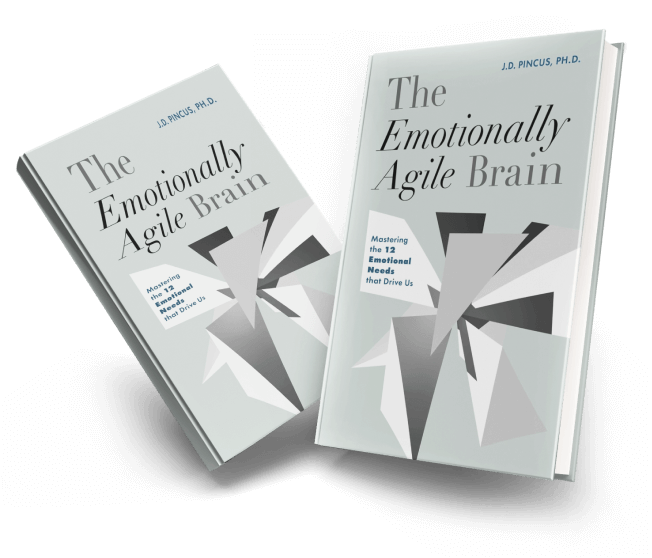Communication is at the core of human interaction. It shapes relationships, influences our success, and determines the outcomes of conflicts. However, effective communication is not as simple as speaking and listening; it involves understanding emotions, motivations, and unconscious biases. This article explores communication styles, challenges, the impact of social media, and how the AgileBrain framework’s Promotion (wanting more of the good) and Prevention (wanting less of the bad) polarity helps us communicate and resolve conflicts more effectively.
Communication Styles and Challenges
Four Main Communication Styles
(Adler & Towne, 2002)
Effective communication is largely influenced by an individual’s communication style. While each style has its place in certain situations, some are more effective than others when fostering understanding and resolving conflicts.
By recognizing and adapting to different communication styles while overcoming these common challenges, individuals can foster clearer, more meaningful interactions and navigate conflicts more effectively.
Listen to the Podcast
Passive Communication Style
Agressive Communication Style
Passive-Agressive Communication Style
Assertive Communication Style
Common Challenges in Communication
While choosing an appropriate communication style is crucial, challenges often arise that hinder effective interactions. These obstacles can be both internal (cognitive biases, emotional triggers) and external (technological limitations, cultural differences)
The AgileBrain Framework: Understanding Emotional Drivers in Communication
The AgileBrain neuroscience exercise reveals human emotions and motivations by identifying the good feelings one wants more of (Promotion Needs) and the bad feelings one wants less of (Prevention Needs). Understanding these emotional drivers helps refine communication and conflict resolution strategies.
Promotion vs. Prevention Mindsets
(Regulatory Focus Theory)
- Promotion Needs: Focus on aspirations, growth, and success. These individuals prefer optimistic, forward-looking communication.
- Prevention Needs: Focus on security, responsibility, and risk avoidance. They seek safety and clear expectations in conversations.
Each person operates on a spectrum of Promotion and Prevention Needs across different domains, shaping their communication preferences and reactions in conflicts.


How Emotional Drivers Influence Communication and Body Language
Understanding the feelings we want to experience more or less influences how we express ourselves. Our emotional drivers, mapped in AgileBrain’s framework, shape our communication tendencies and body language.
By understanding these emotional drivers, we can tailor our communication to match the needs of others, ensuring greater clarity, engagement, and trust.
Below is how each emotional need impacts communication:
Safety vs. Insecurity
Autonomy vs. Disempowerment
Inclusion vs. Exclusion
Justice vs. Injustice
Authenticity vs. Conformity
Immersion vs. Stagnation
Caring vs. Uncaring
Ethics vs. Wrongdoing
Potential vs. Limitation
Success vs. Failure
Recognition vs. Scorn
Purpose vs. Materialism
Step-by-Step: Applying AgileBrain Insights to Communication and Conflict Resolution
Identify Your Communication Style & Emotional Drivers
Using the AgileBrain framework, reflect on your dominant promotion and prevention needs. Ask yourself:
- Do I focus on growth (Promotion) or security (Prevention) in conversations?
- What emotional triggers cause me to react defensively or disengage?
- How do my emotional needs influence my communication style?
Self-awareness is the first step to improving how we interact with others. For example, recognizing whether you seek Autonomy, Inclusion, or Justice (Promotion) or seek to prevent Disempowerment, Exclusion, or Injustice (Prevention) allows you to adjust how you express yourself in conversations.
Recognize the Other Person’s Emotional Drivers
In any communication or conflict situation, understanding the other person’s motivational drivers is crucial. Ideally, the other person would complete the AgileBrain exercise as well. But if they did not, observing their body language, tone, and emotional responses will help you tailor your communication to their needs.
- Is the other person motivated by advancement and Success (Promotion)? They may prefer visionary discussions, innovation, and positive reinforcement.
- Are they concerned about Insecurity and instability (Prevention)? They may need clear guidelines, risk mitigation, and structured solutions.
- Are they seeking Recognition (Promotion) or trying to avoid Scorn (Prevention)? This influences how they interpret praise or criticism.
Advocate for Yourself Effectively
Advocating for yourself means expressing your needs clearly while maintaining mutual respect and fostering collaboration. Here’s how:
- Align with Your Emotional Drivers: If you are Promotion-focused, frame your request in terms of growth, opportunity, and progress. If you are Prevention-focused, emphasize security, fairness, and stability.
- Use Assertive Communication: Be direct but respectful. Instead of saying, “You never listen to me,” try, “I need to feel heard in our discussions so we can collaborate more effectively.”
- Clarify Your Boundaries: If you need more Autonomy, express it in a way that highlights benefits to both parties. If you want to avoid Exclusion, openly share your desire to be involved in decision-making.
- Acknowledge the Other Person’s Perspective: Balance your advocacy by recognizing their needs. If they prioritize Justice, ensure fairness in your request. If they seek Success, align your ask with shared goals.
Adapt Communication Strategies Based on Emotional Needs
Once you understand both your and the other person’s emotional drivers, adjust your communication to foster understanding and cooperation.
- For Promotion-Oriented Individuals: Use aspirational language, focus on opportunities, and avoid excessive caution or constraints. Acknowledge their ideas and potential.
- For Prevention-Oriented Individuals: Provide reassurance, clarify risks, and emphasize responsibility and security. Offer clear, structured feedback and avoid ambiguity.
Example: If a colleague is Prevention-focused and worried about injustice, highlight fairness and procedural integrity in your discussion. If they are Promotion-focused and driven by success, emphasize growth, achievement, and potential rewards.
Prepare for Conflict Resolution Using AgileBrain Insights
Follow-Up and Reinforce Positive Communication
After resolving a conflict or an important conversation, ensure that mutual understanding is reinforced:
- Summarize key points of agreement and next steps.
- Check in later to see if the other person feels heard and respected.
- Continue adapting your communication based on their emotional needs.
Key Take-Aways
Effective communication and conflict resolution require more than just words; they require a deep understanding of our emotional drivers. By integrating AgileBrain’s insights about Promotion (want more) and Prevention (want less) into our communication strategies, we can navigate difficult conversations with greater emotional intelligence, foster deeper relationships, and resolve conflicts with greater success.









